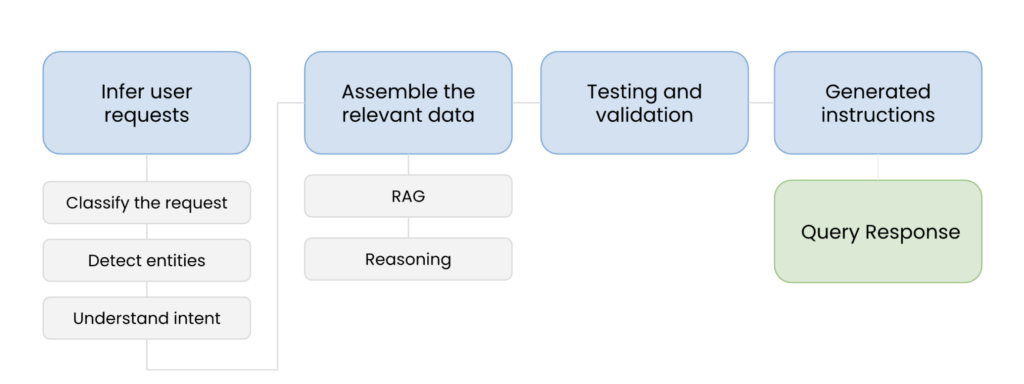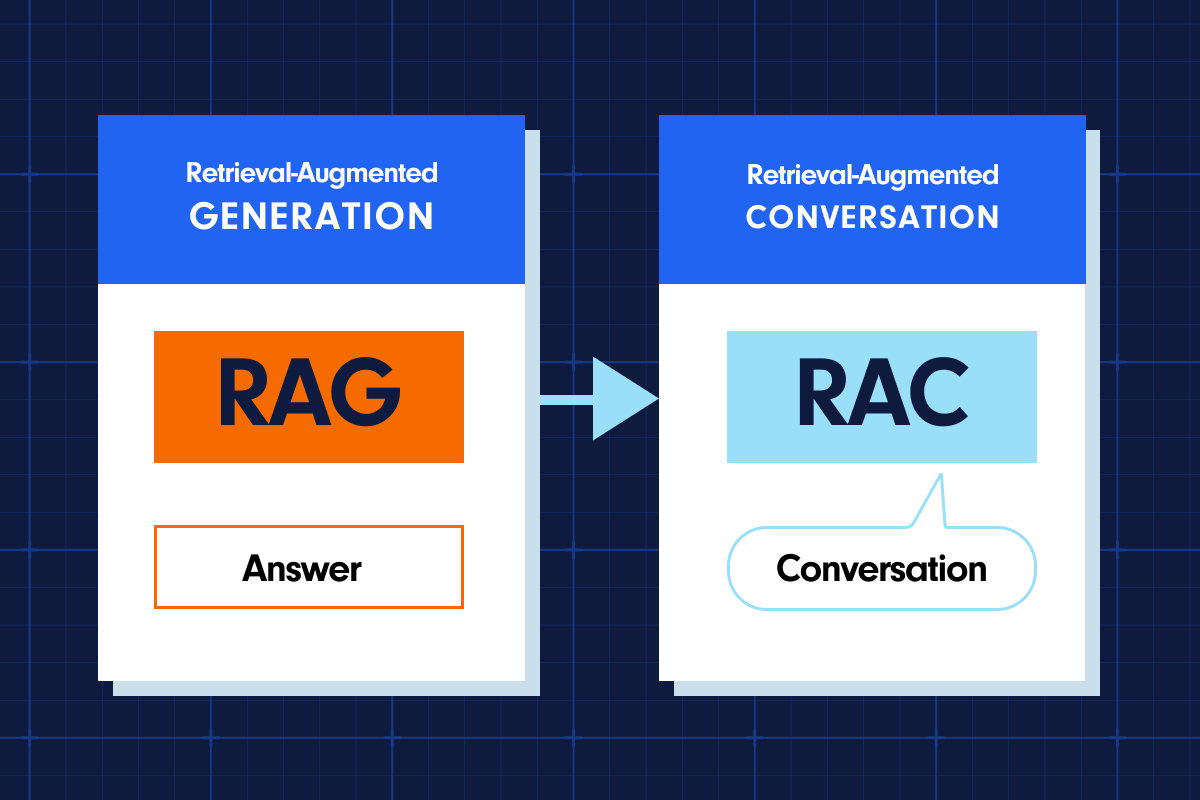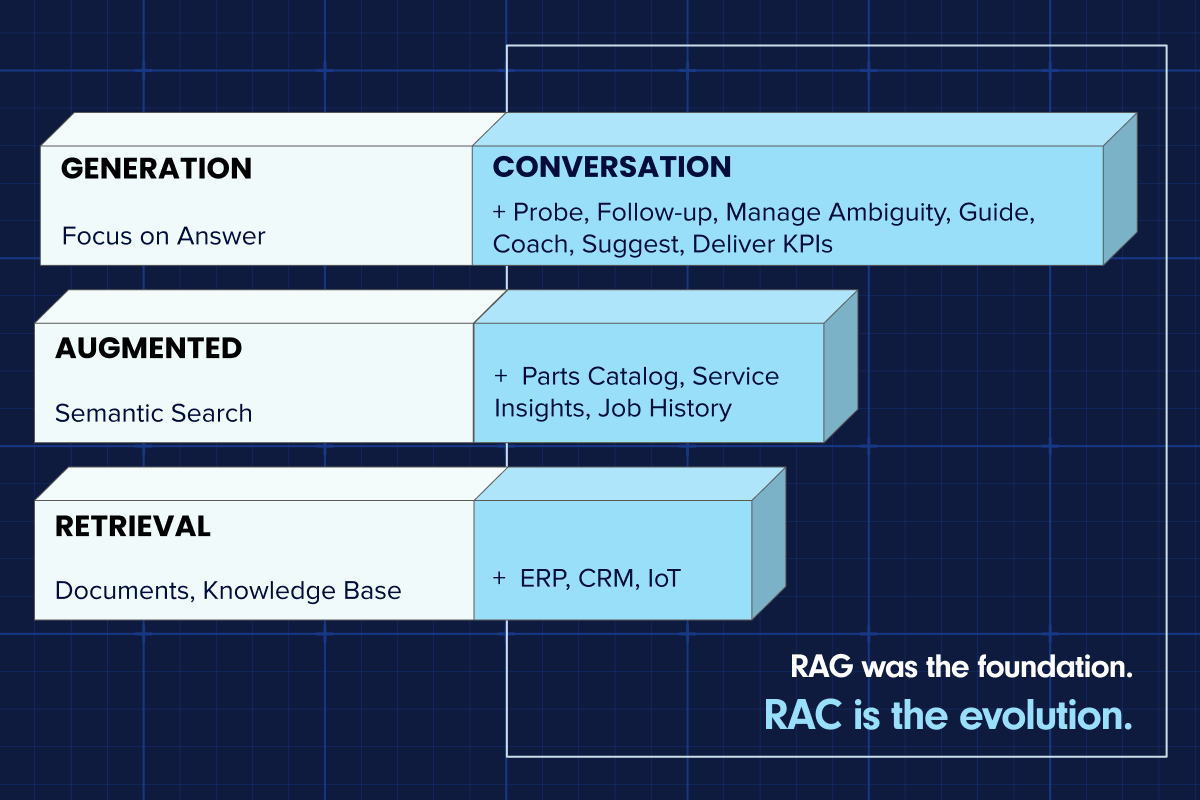Over the past decade, many organizations have realized how important it is to collect and use data insights in decision-making—but data quality is still an issue for many organizations. Through 2025, at least 30% of general AI projects will falter post-proof of concept due to inadequate data quality.
With the new approach of using GenAI for various use cases, we see many offerings for the market to optimize problem-solving. Unfortunately, many of these solutions only scratch the surface due to data quality issues or missing data.
Aquant brings years of experience and innovation to solve every unique service problem. With the help of behavioral scientists and world-class data scientists, Aquant designed a modeling approach that combines expert knowledge and service data. This approach bridges the data gap and ensures your AI system is built on trustworthy data.
Our goal is to maximize the value of data in every user interaction. In this blog, we will explore how GenAI has revolutionized data interaction, making it more intuitive and actionable.
Finding Hidden Gems in Service Data
Datasets can be complicated, but Aquant believes all data has hidden details. And when analyzed and utilized wisely, your data can surface precious information.
Classified and processed data can deliver insights, real-time recommendations, and overall organizational improvement. For example, data can show how companies operate, what they prioritize, where they struggle, and where they can improve.
Aquant focuses on helping service organizations on their transformation journeys, unlocking powerful insights into their business, and enabling teams with AI-powered tools corresponding to their unique challenges and experiences. Imagine AI that could understand your data, users, and business—how would it change your day-to-day business decisions?
Did you know? As a team, we continuously challenge ourselves to think about how we can use AI internally. One of the exciting use cases we came up with is classifying Service Co-Pilot interactions to know which data points users are most interested in so we can proactively focus on new product enhancements.
Solving Real-World Problems with AI
The first step in Aquant’s journey is to understand customer needs. In our discussions with customers, we’ve found that they often struggled with:
- Accessing data to get insights.
- Using data in real-time to make decisions.
- Closing the knowledge gap.
- Adopting the Shift Left strategy.
GenAI plays a crucial role in meeting needs like those above. GenAI, and specifically LLMs, are great at:
- Providing conversational experiences that identify user intent and sentiments.
- Summarizing data (short or long form, with steps or not, etc).
- Reasoning actions, such as classification, decision-making, and troubleshooting.
How Aquant’s Service Co-Pilot Uses GenAI
Before GenAI and LLMs were available, most interactions with data were accomplished via apps. These apps provided a flow or dashboard you could interact with, as well as very robotic site chatbots.
Not all apps are straightforward, and there’s typically a knowledge gap in organizations that blocks levels of inexperienced personas from using them. To bridge this gap, the ability to chat using natural language and not only interact with the apps becomes a crucial product capability.
The ability to chat provides users the opportunity to ask questions that help them learn. The ability to chat can expose us to use cases we’ve not been able to have before because they’d have required extra processing.
GenAI in Action
Most users rely on Natural Language Processing to interact with apps, so we knew that Aquant’s app UX should allow enough space for users to describe what they want.
Our users can log in to their CRM or open a standalone website where Service Co-Pilot is accessible, and they can type in their request.
Here’s a closer look at the process:

This process might feel complex, but we left all the hard work to the back end to provide our users with the best recommendations. Our system simplifies complex tasks by automatically delivering personalized recommendations for every unique service challenge. This ensures you get the most relevant and effective solutions quickly and easily.
- Infer user requests: First, we must understand what they’re looking for. We use reasoning to:
-
-
- Classify the request. Fitting the request into a known category helps us formulate an answer with the right data points.
- Detect entities in the request. This can help apply filters so the answer will rely on the right data points.
- Understand the user’s intent. It’s essential to determine whether they are looking for information, facing an issue they’re trying to troubleshoot, etc.
-
- Assemble the relevant data: We use the processed data to answer the user’s request. However, we must use only pertinent information to reduce noise hallucinations and increase accuracy. To do this, we depend on:
-
-
- Retrieval Augmented Generation (RAG): Some customer data is ingested in an embedding process, transforming the data into vectors. This helps us query data with techniques like Vector Search using semantic and lexical similarity (also called Hybrid Search).
- Reasoning: We can use LLMs to reason and help us decide on the right data points.
-
- Ground the process: This helps us validate our steps and ensure we have the correct data for the task.
- Build out instructions using Prompt Engineering: This positions all the information and data in the right places so the LLM can understand and reason over them.
- Respond to the query: Submit the prompt to the LLM to get the response streamed to the user.
The beauty of GenAI is that this process takes a few seconds, and with a simple user query, they get a response based on trusted data tailored to your unique user experience.
Creating New Experiences with GenAI
The ability to chat opens our minds to how we can consume data and enables us to leverage data we couldn’t before, like manuals, videos, and much more. The ability to adapt to the unique experiences of each user makes it personalized. It helps us provide this data to many different types of users, which can help us shift left and close the knowledge gap.
The ability to chat can help us access data like never before. We can use simple commands to request data, and with GenAI, we can now figure out which data points will fit the request and provide an answer.
GenAI You Can Trust
Our AI systems prioritize accuracy and reliability, with specific measures in place to minimize errors such as hallucinations. We employ grounding techniques to ensure responses are based on verified data, and our logical reasoning algorithms guide the AI to produce substantiated outputs.
Transparency is central to our operations; we explain how AI-generated responses are derived, enhancing user understanding and trust. Continuous monitoring of the AI’s performance allows us to detect and correct deviations in real time, ensuring the system evolves and maintains high accuracy. Our AI systems consistently deliver precise and dependable outputs through these combined strategies.
As we share the journey with our customers, we realize how important it is to overcome data quality challenges to ensure that our AI systems are reliable and effective. So, we continue investing time and resources in exploring new ways to advance our platform to correspond to new real-world challenges in the field service world. We look forward to sharing further innovations in this dynamic field.
Sign up for a 7-Day Challenge to learn how to take your service strategy to new heights.
About the Author
 Sahar Sabin, Senior Software Architect & Innovation Team Leader
Sahar Sabin, Senior Software Architect & Innovation Team Leader
I am a Senior Software Architect and an innovation team lead. My team and I are dedicated to leveraging new technologies and GenAI to provide better customer value and improve our day-to-day work processes.








